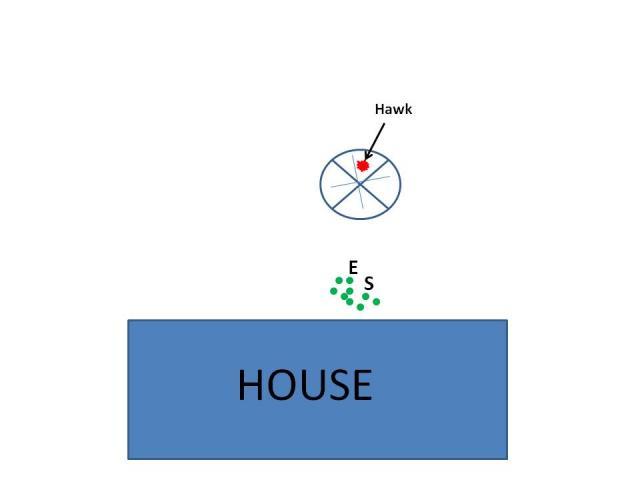SALLIE REPATRIATED
I released Sallie from coop after 30 hours of confinement. She was with daughter Spud for a good three hours. While I was pulling wagon around house Sallie launched and flew about 175 feet from location of coops to back yard. Sallie sure likes to fly. She did not attempt to return to nest.
FRONT PORCH CLEANED AND FLOCK MOVED!
With some effort I may have gotten front porch flock to finally move off front porch. New location, remote roost constructed about 125 feet to north, is more varment resistant and softens intensity of Eduardos crowing that can be heard coming through front window and door. To achieve, I removed all elevated structures from front porch, including footstools and wagon, then collected red jungle hen and carried her over to new location. This time I allowed her to fly the last little bit up into roost. Eduardo I was able to call by rapidly repeating the words "come on" which is a fair imitation of the contact call used when birds moving from one location to another as a group. Half of juveniles walked with him but turned around at last second and returned to house. The juveniles were flying up on house and vehicles, up and down repeatedly. Some even got to ridge of roof before coming back down. Sallie did same and they flew up on everythng but desired location that was more than 10 feet above ground. I finally collected Sallie and juveniles and moved them to remote roost allowing all to fly the last little bit up. That last little bit up may have been critical to get them to want to stay in new location. I am now convinced a vocalization that calls flock mates to roost is used by first birds up and maybe by birds staging below roost.




